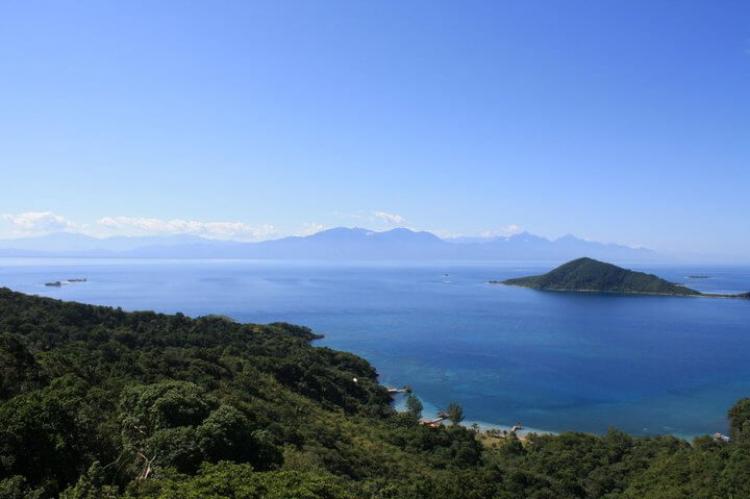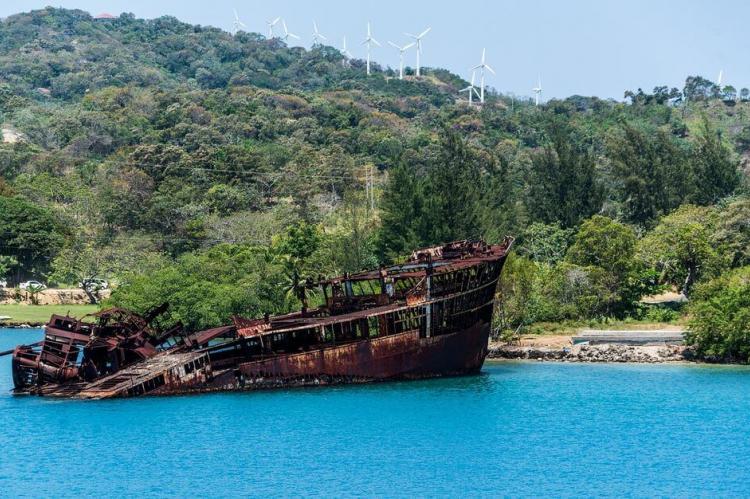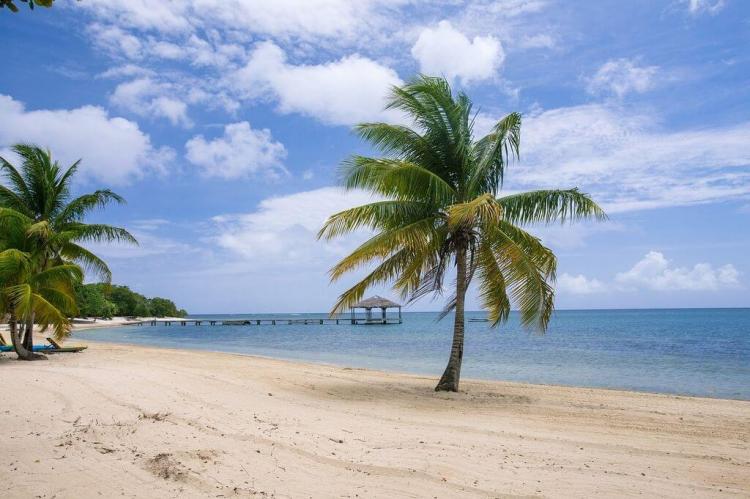Gulf of Honduras: Roatán and the Bay Islands (Central America)
The Bay Islands are a group of eight islands and 53 small cays situated within the Gulf of Honduras, an inlet of the Caribbean Sea. The island of Roatán rests on an exposed ancient coral reef and has become an important cruise, diving and eco-tourism destination in Honduras.
Gulf of Honduras
The Gulf of Honduras (or Bay of Honduras) is a wide inlet of the Caribbean Sea, indenting the coasts of Honduras, Guatemala, and Belize.
The Gulf of Honduras is lined by the reefs known as the Pelican Cays of Belize to the north, part of the Belize Barrier Reef, which forms the southern part of the 900 km long Mesoamerican Barrier Reef System. The Gulf of Honduras also includes the Bay Islands of Honduras to the east.
The Gulf of Honduras is marked by complex dynamics of coastal and open waters and ocean currents, which have produced a very diverse and unique ecosystem with a wide variety of coastal marine waters, including coastline estuaries, barrier beaches, lagoons, intertidal salt marshes, mangrove forests, seagrass beds, keys, and barrier reefs.
The gulf receives the runoff from the watersheds of 12 rivers. These rivers include the Moho, Sarstún, Río Dulce, Motagua, and Ulúa.
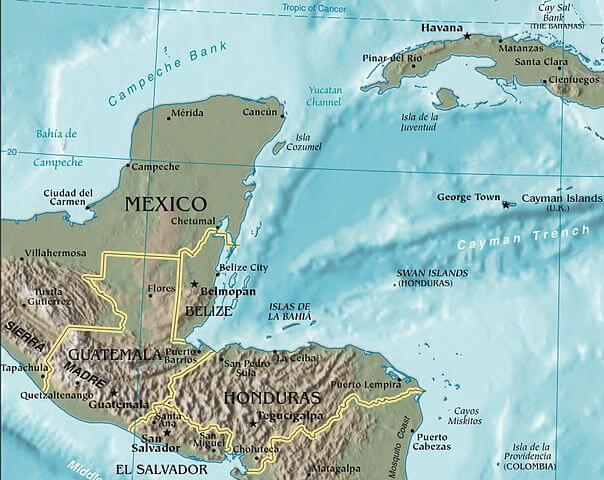
Area map depicting the location of the Gulf of Honduras
Roatán
The Island of Roatán rests on an exposed ancient coral reef, rising to about 270 m (890 ft) above sea level. Offshore reefs offer opportunities for diving. Most habitation is in the western half of the island. The most populous town of the island is Roatán (known locally as Coxen Hole), the capital of Roatán municipality and located in the southwest.
West of Coxen Hole are the settlements of Gravel Bay, Flowers Bay, and Pensacola on the south coast and Sandy Bay, West End, and West Bay on the north coast. To the east of Coxen Hole are the settlements of Mount Pleasant, French Harbour, Parrot Tree, Jonesville and Oakridge on the south coast and Punta Gorda on the north coast.
The easternmost quarter of the island is separated by a channel through the mangroves that are 15 m (50 ft) wide on average. This section is called Helene, or Santa Elena, in Spanish.
Satellite islands at the eastern end are Morat, Barbareta and Pigeon Cay. Further west, between French Harbour and Coxen Hole, are several cays, including Stamp and Barefoot Cay.
Located near the Mesoamerican Barrier Reef, the largest barrier reef in the Caribbean Sea, Roatán has become an important cruise ship, scuba diving and eco-tourism destination in Honduras.
Bay Islands
The Bay Islands are a group of small islands located in the Gulf (or Bay) of Honduras, off the coast of northern Honduras. Consisting of eight islands and 53 small cays, they have an area of 101 sq mi (261 sq km) and lie 15 km (10 mi) to 60 km (40 mi) offshore in the Caribbean Sea.
Collectively, the islands form one of the 18 Departments of Honduras. The departmental capital is the town of Roatán, known locally as Coxen’s Hole, on the island of Roatán.
The Bay Islands comprise three separate island groups:
-
Swan Islands (or Islas Santanilla or Islas del Cisne), the most northerly: initially named Islas de las Pozas by Christopher Columbus in 1502. It is a chain of three islands with a land area of 3.1 sq km (1.2 sq mi), uninhabited except for a small permanent Honduran naval garrison stationed on Great Swan Island.
-
Islas de la Bahía (Bay Islands) with the main islands Roatán, Guanaja and Útila, and numerous satellite islands 120 km (75 mi) to the south: Roatán is characterized by its mountainous backbone, composed of hilltops that run west-to-east across the entire island. Guanaja is the second-largest and is even more mountainous than Roatan. Utila is third in size and is characterized by low mangrove swamps and a few small, low hills on its eastern end; the soils on this island are surprisingly fertile. Barbareta, Morat and the Hog Islands are all small and rugged.
-
Cayos Cochinos (or Cochinos Cay), located further south, consists of two small islands (Cayo Menor and Cayo Grande) and 13 more small coral cays. The islands are a Marine Protected Area, established as a vital area of the Mesoamerican Barrier Reef System, and are managed by the Honduran Coral Reef Foundation.
The main islands were first sighted by Christopher Columbus in 1502 and were settled in 1642 by English buccaneers. Between 1650 and 1850, Spain, Honduras, and England intermittently contested the islands. Finally, the islands were annexed to Great Britain in 1852 but were ceded to Honduras in 1859.
The economy of the Bay Islands has long relied almost entirely on the ocean, despite brief forays into the banana and pineapple exportation business in the late 19th century. Fishing has always been and continues to be the mainstay of the economy, with a fleet of approximately 400 commercial boats on all three main islands, fishing mainly for shrimp, lobster, and conch.
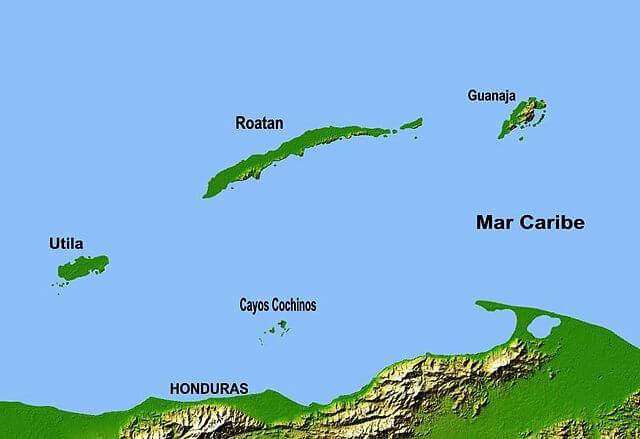
Map depicting the Bay Islands of Honduras.
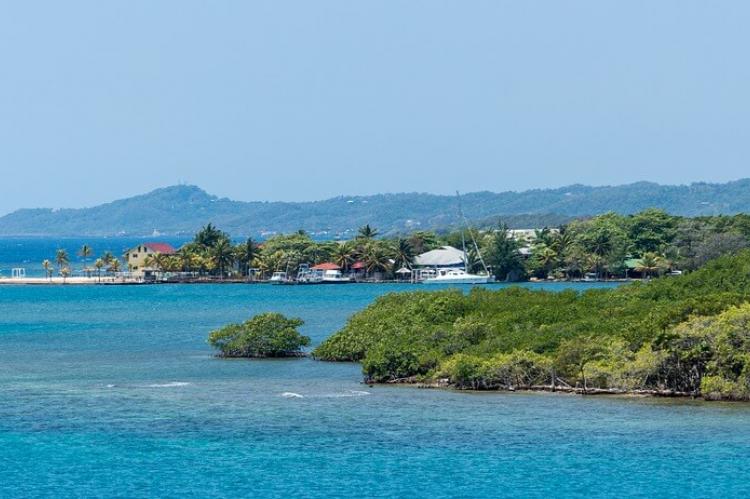
![West Bay Beach, Roatán, Bay Islands, Honduras by Westbrowncanada [CC BY-SA 3.0 (https://creativecommons.org/licenses/by-sa/3.0)] West Bay Beach, Roatán, Bay Islands, Honduras](/sites/default/files/styles/large/public/roatan_bay_islands_opt%20%281%29.jpg?itok=lA0pA4BA)

